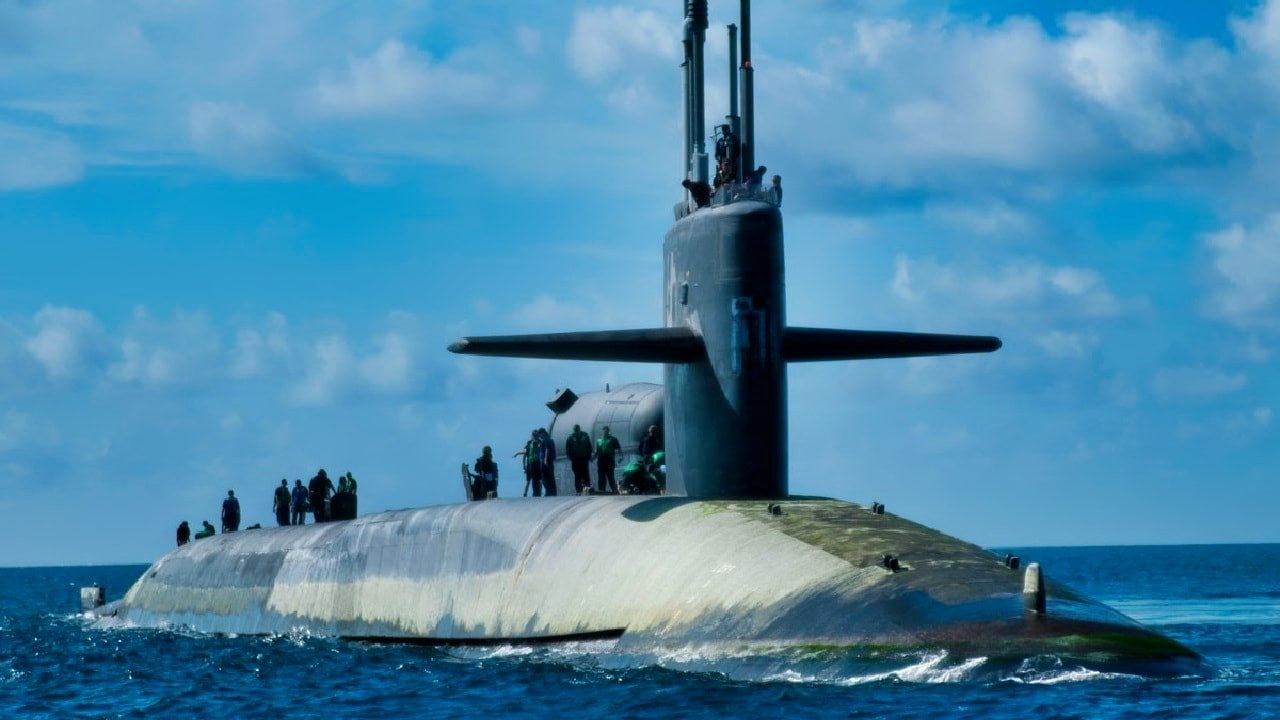China Was Spooked: Why the Navy Surfaced 3 Ohio-Class Missile Subs as a 'Lesson'
China's aggressive actions in the South China Sea, including dangerous maneuvers by PLAAF pilots near American aircraft, demand a strong deterrent response from the United States. A potential strategy could involve resurfacing Ohio-class SSGNs to signal America's readiness and capability.
Summary and Key Points: China's aggressive actions in the South China Sea, including dangerous maneuvers by PLAAF pilots near American aircraft, demand a strong deterrent response from the United States. A potential strategy could involve resurfacing Ohio-class SSGNs to signal America's readiness and capability.
-These submarines, which carry 154 Tomahawk cruise missiles each, represent a significant show of force.
-A similar demonstration was made in 2010, where three Ohio-class subs surfaced in strategic locations, reminding Beijing of the U.S. Navy's global reach and strike capabilities.
Countering China: How Ohio-Class Submarines Could Deter South China Sea Aggression
China’s ongoing hostile activity towards American assets in the South China Sea could be countered with a show of force. In the last year, a People’s Liberation Army Air Force (PLAAF) pilot flew within ten feet of an American B-52 bomber, putting both aircraft in danger of collision.
In another incident, a Chinese J-16 fighter performed an aggressive maneuver during the intercept of an American RC-135 airframe. The United States must deter these hostile acts from continuing.
Back in 2010, the U.S. Navy surfaced three of its Ohio-class (SSGN) guided missile submarines to show Beijing that these formidable boats could sail anywhere across the globe.
China’s naval capabilities have rapidly expanded over the last couple of decades. Between 2000-2005, the People’s Liberation Army Navy (PLAN) nearly doubled in size from 100 maritime platforms to 200.
As reported by The Martime Executive, “This tsunami of Chinese shipbuilding has tremendous potential implications for the PRC’s effort to coercively envelop Taiwan, resolve other sovereignty disputes in its favor, carve out the region as a zone of exceptionalism to international rules and norms, and project Beijing’s power and influence around the world.” As this rapid Chinese naval development was underway, Washington sent Beijing a poignant message by surfacing three of its SSGNs.
An overview of the Navy’s Ohio-Class SSGNs
The Cold War perhaps led to the world’s greatest leaps in submarine innovations in history. In this post-World War II era, American engineers prioritized developing the best of the best submarine technologies, leading to the world’s first ever nuclear-powered submarine—the Nautilus (SSN-571)—by the mid-1950s. In the following decade, the Navy developed ballistic missiles and submarine launch platforms that could be fired while the boat was submerged.
This cutting edge capability led to the commissioning of forty-one ballistic missile subs between the late 1950s and late 1960s.
Over the next few years, the Navy would procure the first four Ohio-class ballistic missile submarines—Ohio, Florida, Michigan, and Georgia. Following the collapse of the USSR, a Nuclear Posture Review dictated that the United States only needed fourteen of its SSBNs to provide the necessary level of deterrence. To abide by the treaty guidelines, the Navy turned four of its SSBNS into SSGNS.

Today, these submarines represent more than half of the submarine force’s vertical launch payload capacity combined. Instead of carrying nuclear-tipped Trident missiles, these submarines are equipped with 154 Tomahawk cruise missiles that are capable of striking targets within 1,000 miles with non-nuclear warheads.
In June 2010, USS Ohio surfaced in the Philippines’ Subic Bay. The USS Michigan was next to pop up, this time in South Korea, followed by the USS Florida in the Indian Ocean. This display of force showcased the Navy could fire as many as 462 new Tomahawks from anywhere across the globe.
There is no way that Beijing did not take notice of this tri-surfacing event. As tensions continue to spiral between Washington and Beijing, a similar strategy could help deter further hostile acts from occurring.
About the Author: Defense Expert Maya Carlin
Maya Carlin, National Security Writer with The National Interest, is an analyst with the Center for Security Policy and a former Anna Sobol Levy Fellow at IDC Herzliya in Israel. She has by-lines in many publications, including The National Interest, Jerusalem Post, and Times of Israel. You can follow her on Twitter: @MayaCarlin.
Image Credit: Creative Commons and/or Shutterstock.
From The Vault


